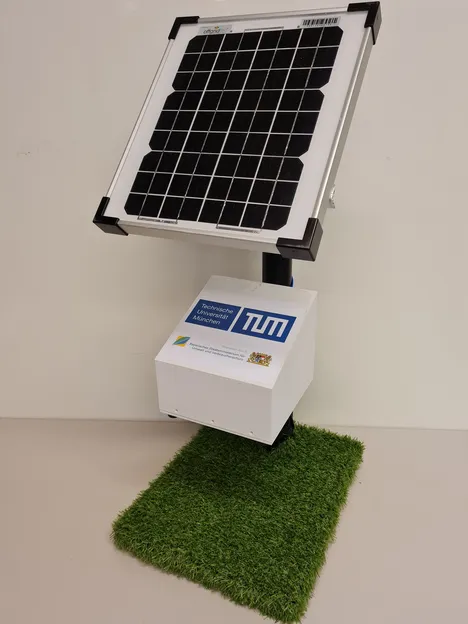- Stand alone low-cost sensor network in the inner city of Munich for modeling urban air pollutants. Geophysical Research Abstracts of the EGUGeneral Assembly 2021, 2021 mehr… Volltext ( DOI )
- Low-Cost Air Quality Sensor Network in Munich. EGU General Assembly 2020, 2020 mehr… Volltext ( DOI )
- Spatial and temporal representativeness of point measurements for nitrogen dioxide pollution levels in cities. Atmos. Chem. Phys. Discuss., 2020 mehr… Volltext ( DOI )
Unique real-time sensor network for densely monitoring air pollutants in Munich
With the help of 30 self-developed sensor systems, the spatial distribution of air pollutants such as NOx and particulate matter is monitored in the inner city of Munich. This will help us to understand the metabolism of urban air pollutants.
Funded by the Bavarian State Ministry of the Environment and Consumer Protection we have set up a densely populated sensor network to monitor air pollutants in Munich (Project TLK 01U-75487: Engmaschiges NO2-Sensornetzwerk in München).
Our group has developed a compact and stand-alone sensor system that is automatically measuring nitrogen dioxide (NO2), nitrogen monoxide (NO), carbon monoxide (CO), ozone (O3) and particulate matter (PM) using electrochemical cells (for all gases) and an optical particle counter (for PM). All systems are connected to the internet (Internet of Things, IoT) to obtain the data in real-time. Our server will analyze these data and create a real-time air quality map of the study area (Maxvorstadt) with a very high spatial and temporal resolution.
In order to ensure high data quality, the sensor are calibrated twice per week using highly precise reference instruments that are also used in the governmental air quality monitoring stations, combined with novel machine learning algorithms. As of mid 2024, the network has been set up to continuously monitor air quality in Munich at a much higher spatial resolution than it is currently the case.



